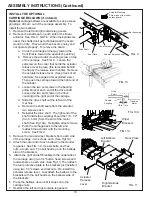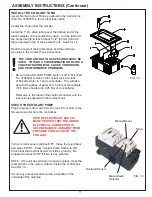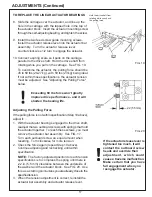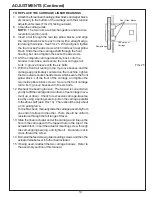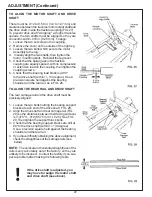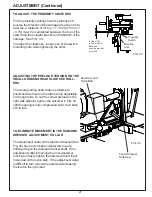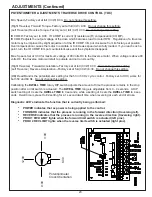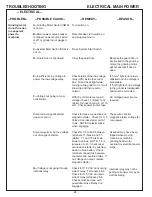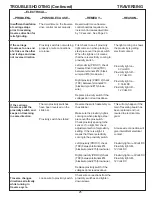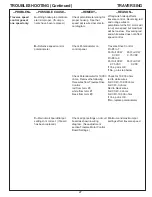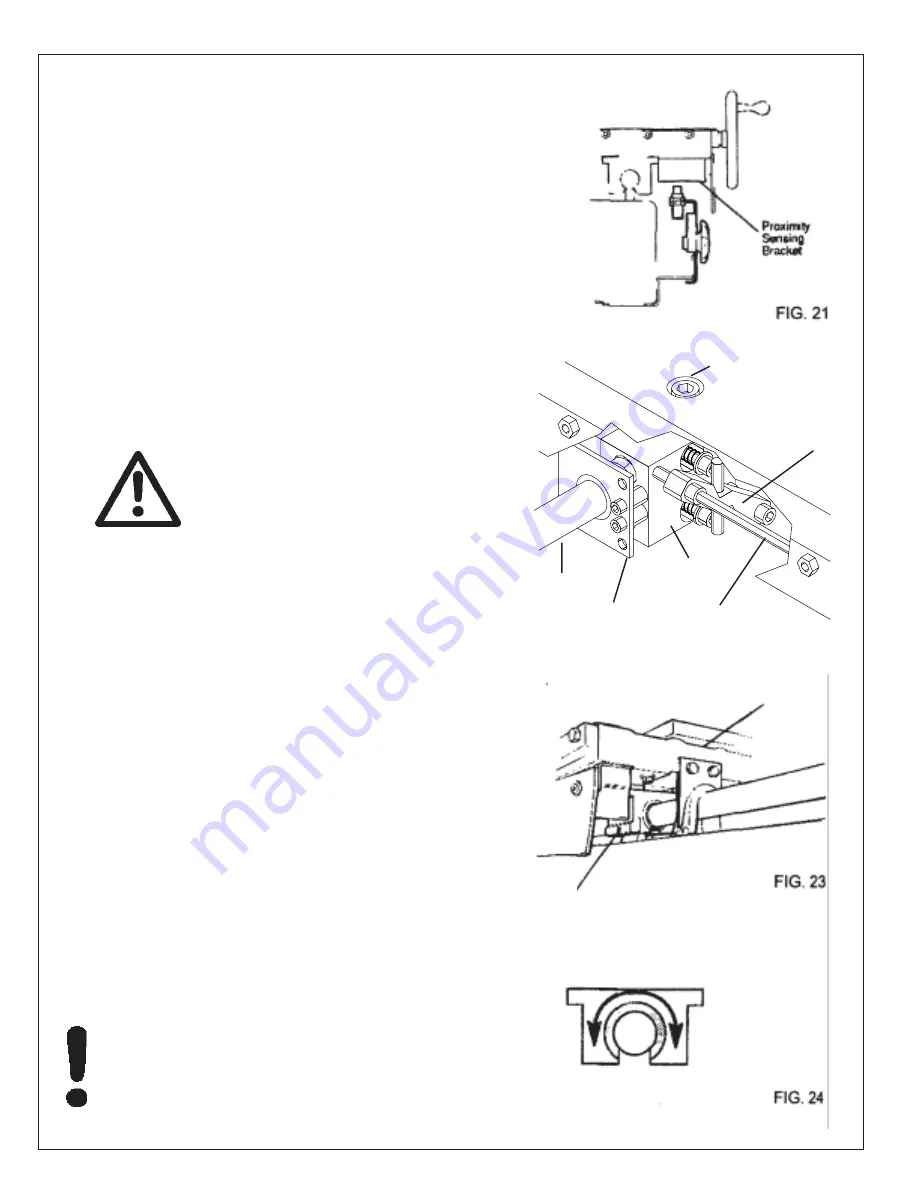
18
TO REPLACE THE CARRIAGE LINEAR BEARINGS
NOTE: Set a small bench or table near the center
front of the machine for use in the following procedure.
1. Remove the optional carriage bellows (if used) from
the carriage. Remove the actuator release lever from
the linear actuator.
2. Remove the complete carriage assembly from the
machine:
A. Remove the two feed screw guide mounting
screws and remove the grinding head assembly from
the carriage. Set the ginding head on a bench taking
care as to not damage the power cord. Remove
the actuator mounting screw, to disconnect the ac-
tuator from the carriage (this is located on the top
side of the carriage base See Fig. 22).
B. Remove the bolts which secure the front and rear
carriage rails to the Grinder base (six screws for
each rail, accessible from beneath the machine).
The grinding head assembly
weighs about 50 lbs (23 kg).
The carriage assembly weighs
about 50 lbs (23 kg). Take
appropriate action when lifting.
C. Lift the complete assembly (carriage and carriage
shafts) out onto a table in front of the Grinder.
3. Slide the rails out of the bearings one at a time.
4. Remove the three linear bearing pillow blocks and wiper
brackets (four screws each) from the bottom of the car-
riage, and discard the bearings.
5. One at a time, slide the three new linear bearing pillow
blocks onto the carriage rails.
6. Adjust the tension screw (FIG. 23) on the side of each
bearing block so that when you radially rotate the pillow
block around the carriage (See FIG. 24) rail there is no
free play between the bearing and rail. You should feel a
strong drag.
Repeat this adjustment to all three pillow blocks, and
then remove the pillow blocks from the carriage rail.
NOTE: The tension is too tight if you feel a cogging
action when you rotate a pillow block around the rail. This
cogging is caused by the bearing skidding on the rail.
Rocking the bearing block back and forth should be a
smooth uniform motion.
Bearings which are too tight or too loose will
cause poor grinding quality. Bearings which
are too tight will also have a much shorter life,
and could damage the rail.
ADJUSTMENT (Continued)
FIG. 22
Actuator Mounting
Screw (under the rubber
splash guard)
Drive Shaft
Linear Actuator
Seal Plate
Actuator Release Lever
Actuator Bar Assembly
Radial Rotation
Carriage
Tension
Adjustment
Screw
Summary of Contents for 670
Page 36: ...36 ELECTRIC SCHEMATIC 67095233 ...
Page 38: ...38 PARTS LIST 6709534 MAIN BASE ASSEMBLY ...
Page 40: ...40 PARTS LIST Continued 6609529 GRINDING HEAD ASSEMBLY ...
Page 42: ...42 PARTS LIST Continued 6709531 TRAVERSE CARRIAGE ASSEMBLY ...
Page 44: ...44 PARTS LIST Continued 6709533 BEDKNIFE SUPPORT ASSEMBLY ...
Page 46: ...46 PARTS LIST Continued 6709536 CONTROL PANEL ASSEMBLY 50 ...
Page 48: ...48 PARTS LIST Continued 6709536 ELECTRICAL ASSEMBLY ...
Page 50: ...50 PARTS LIST Continued 3708784 COOLANT PUMP TANKASSEMBLY 15 ...
Page 52: ...52 ...







